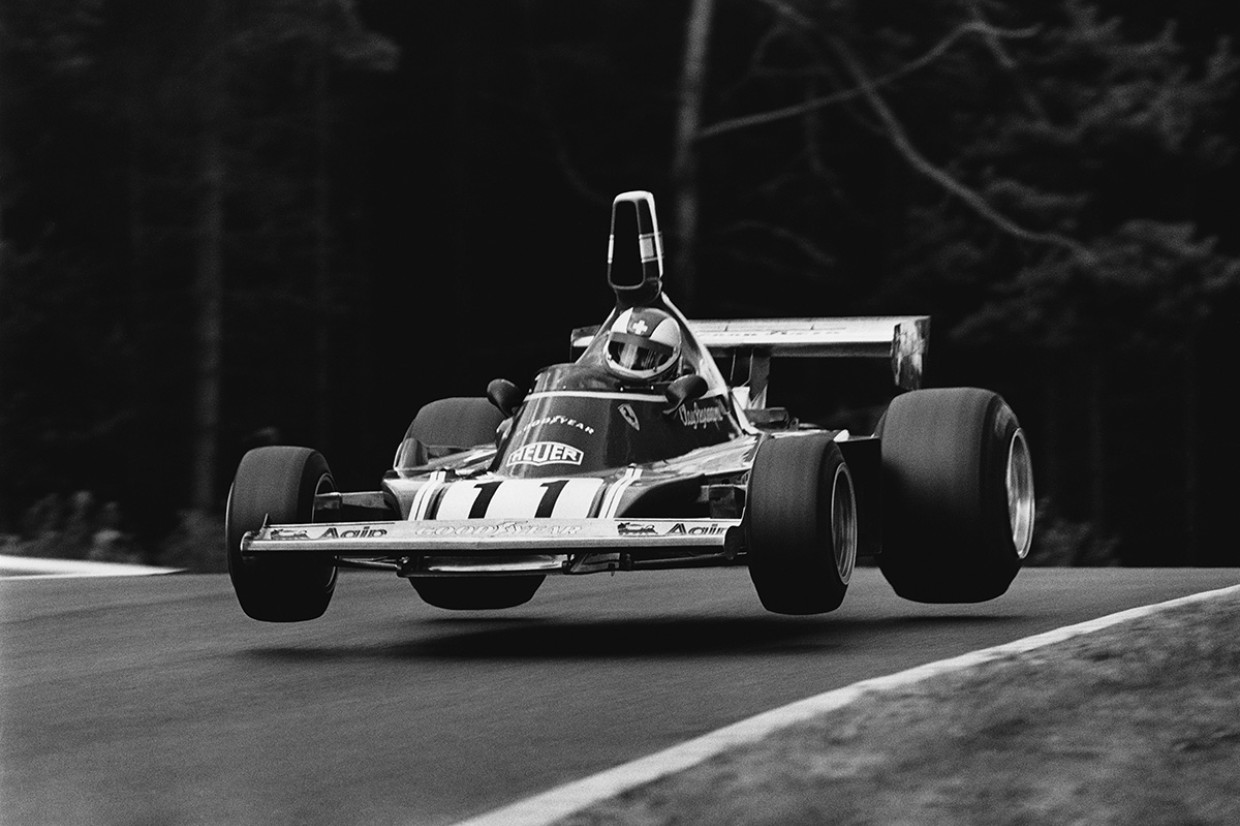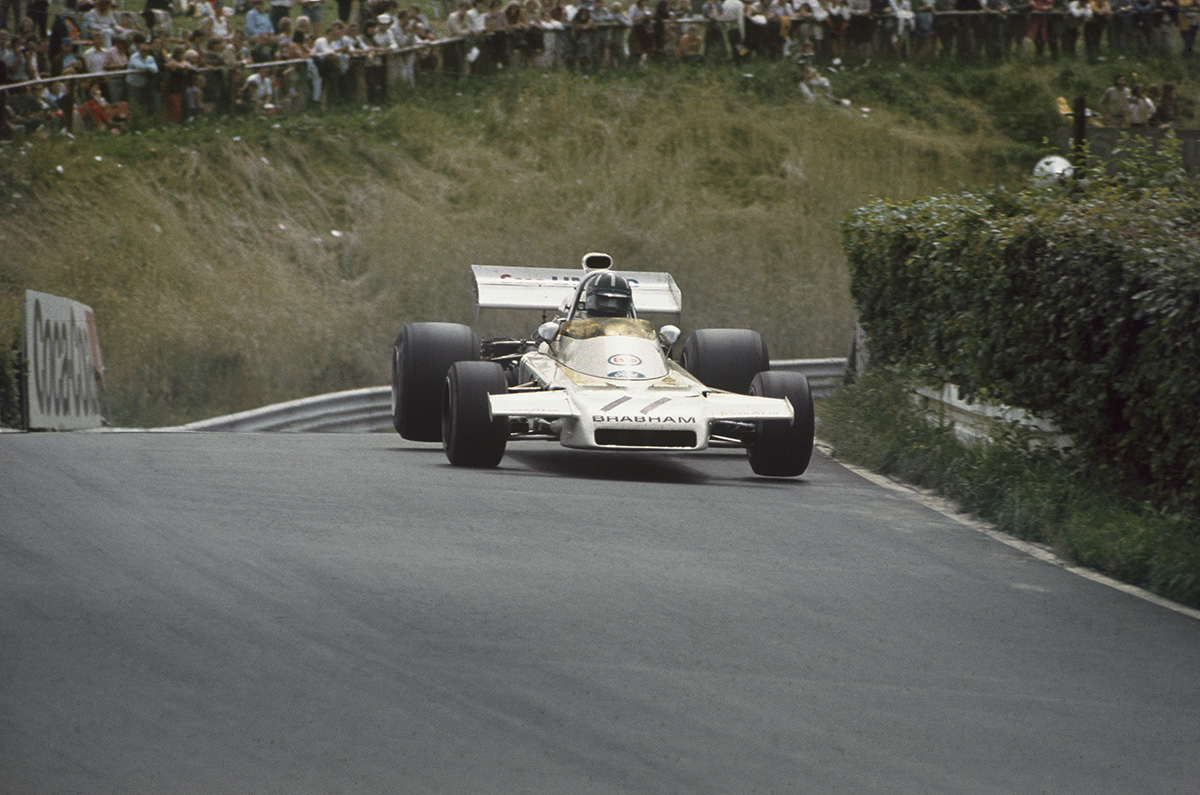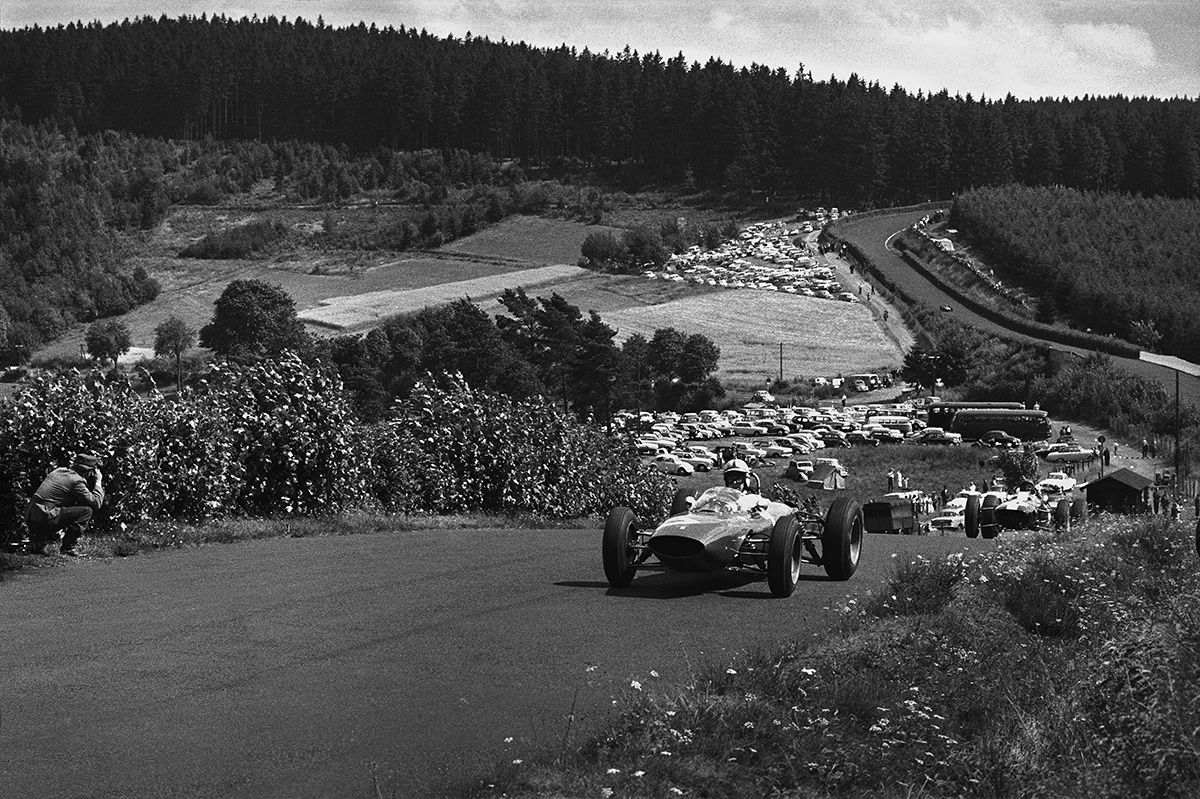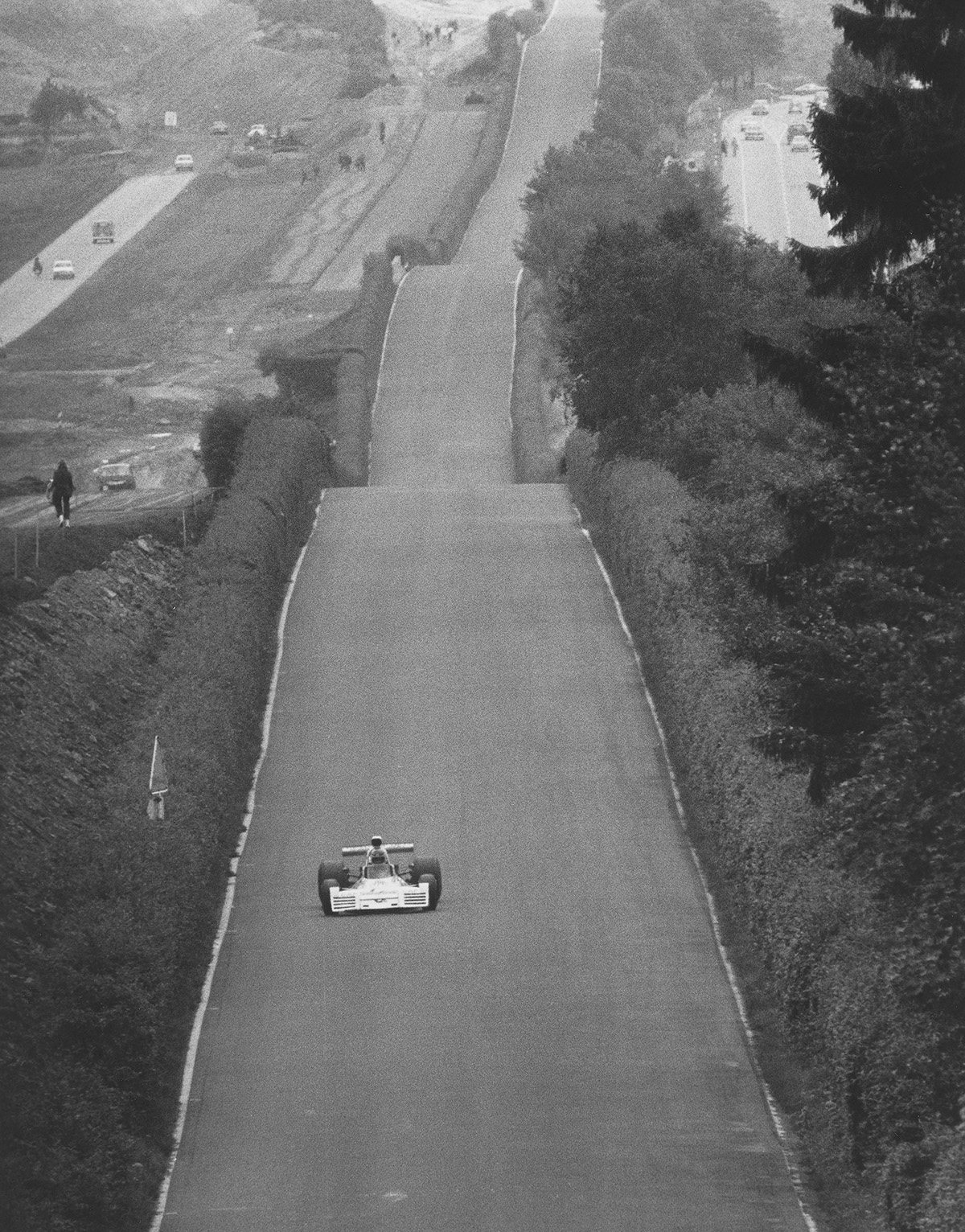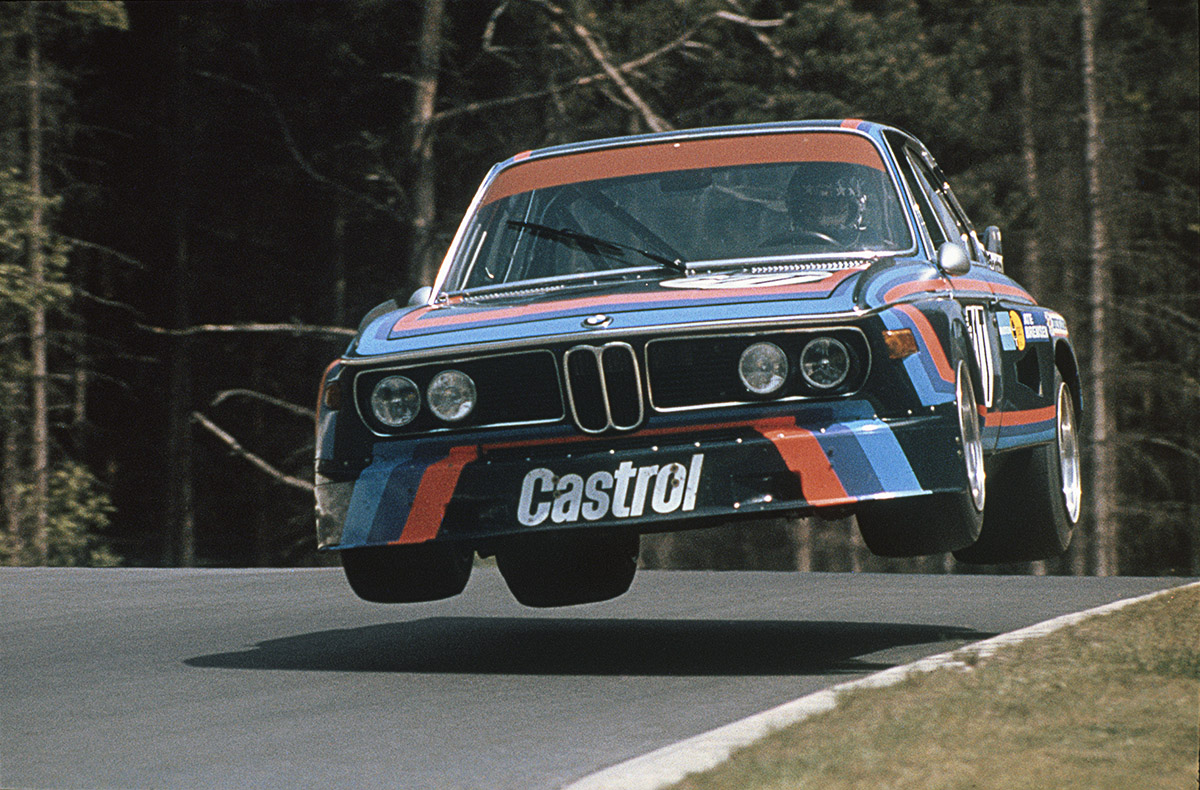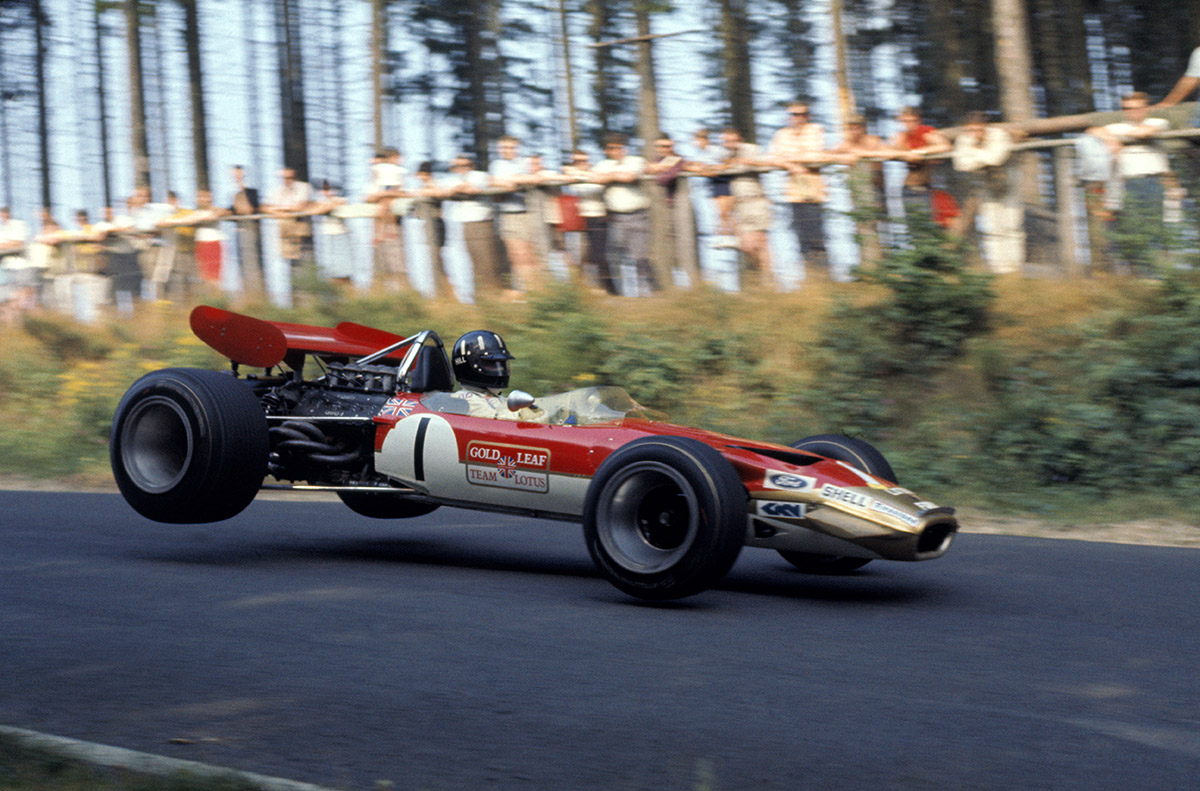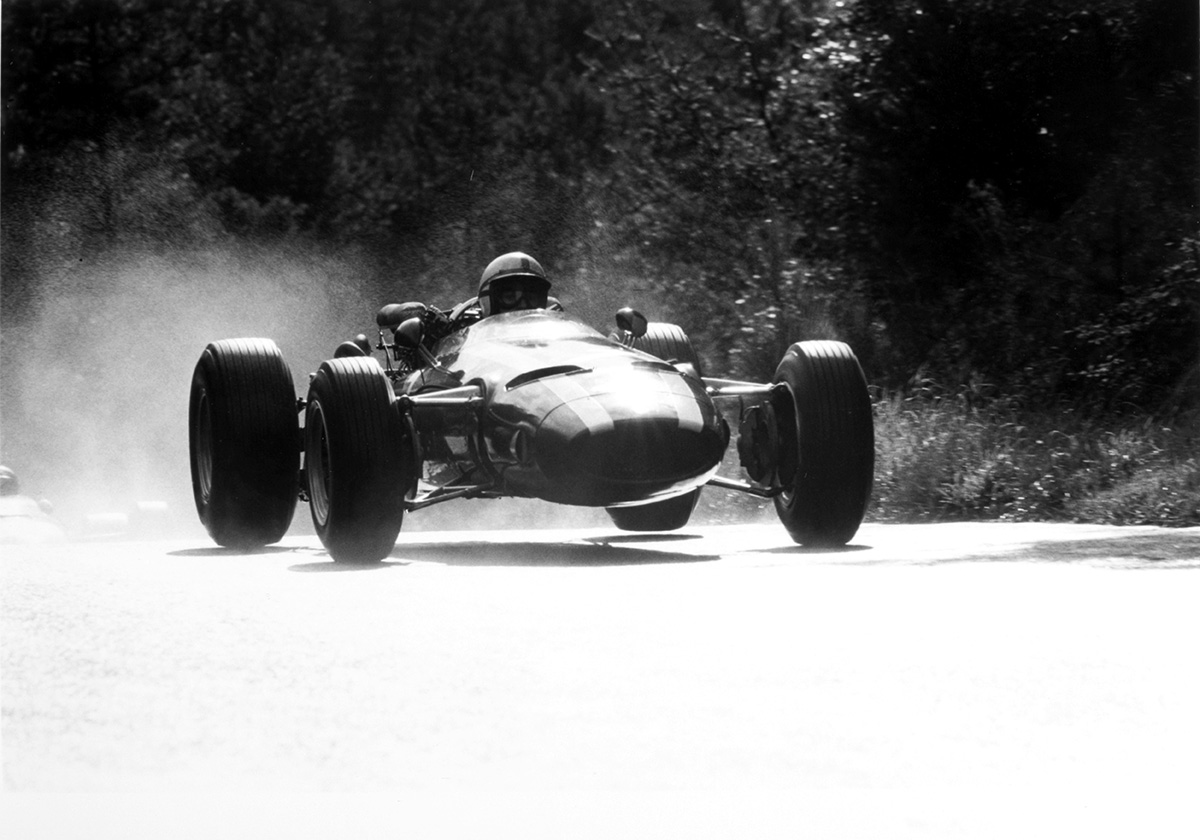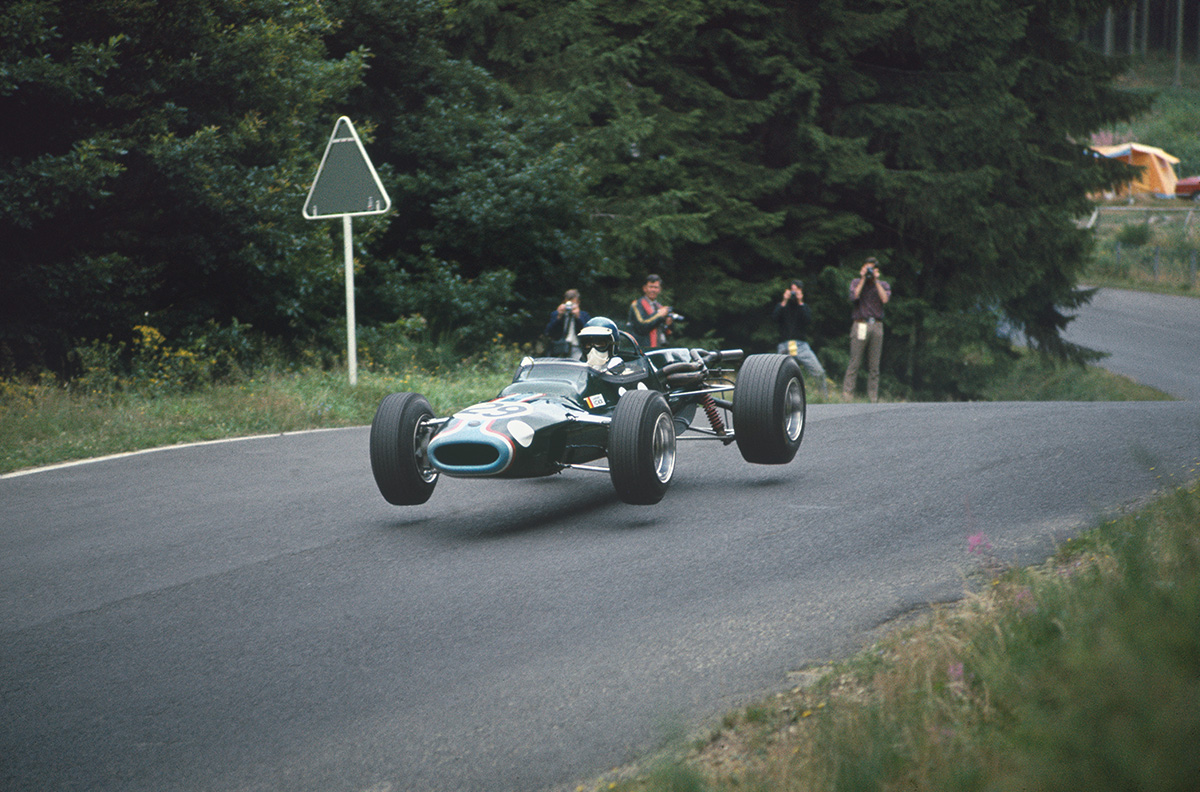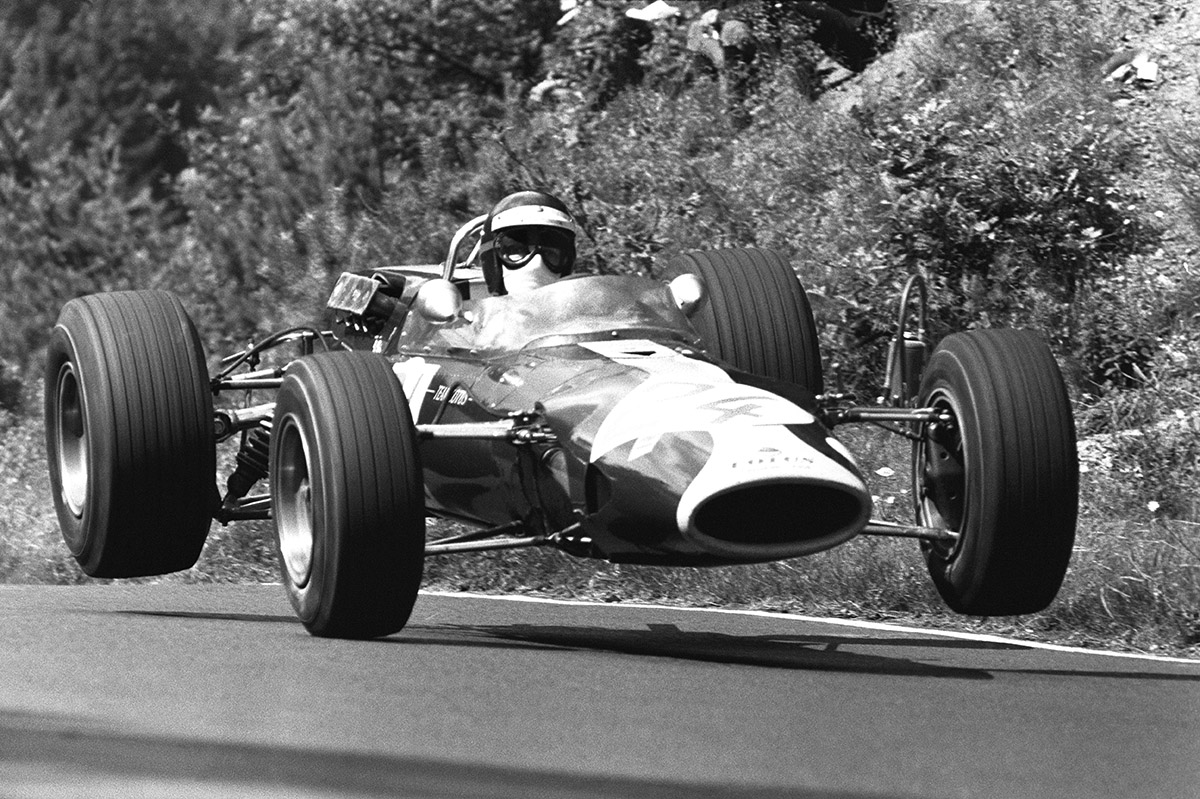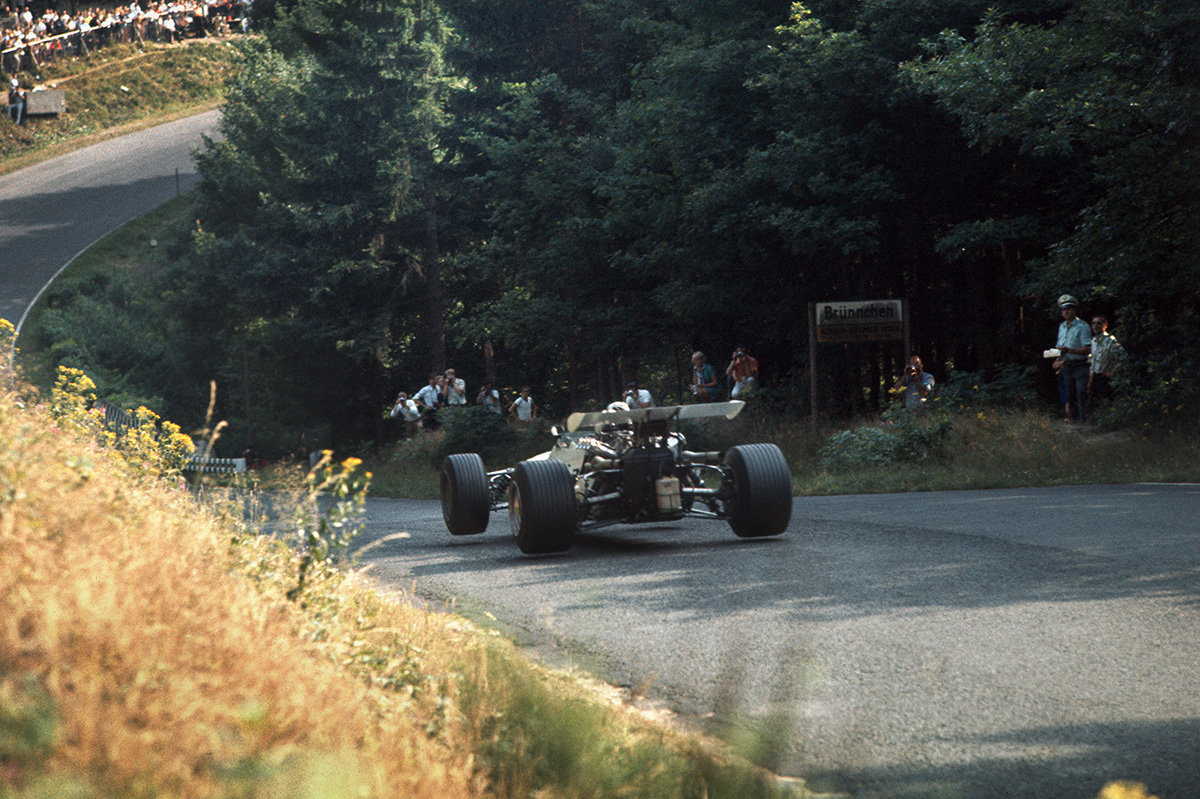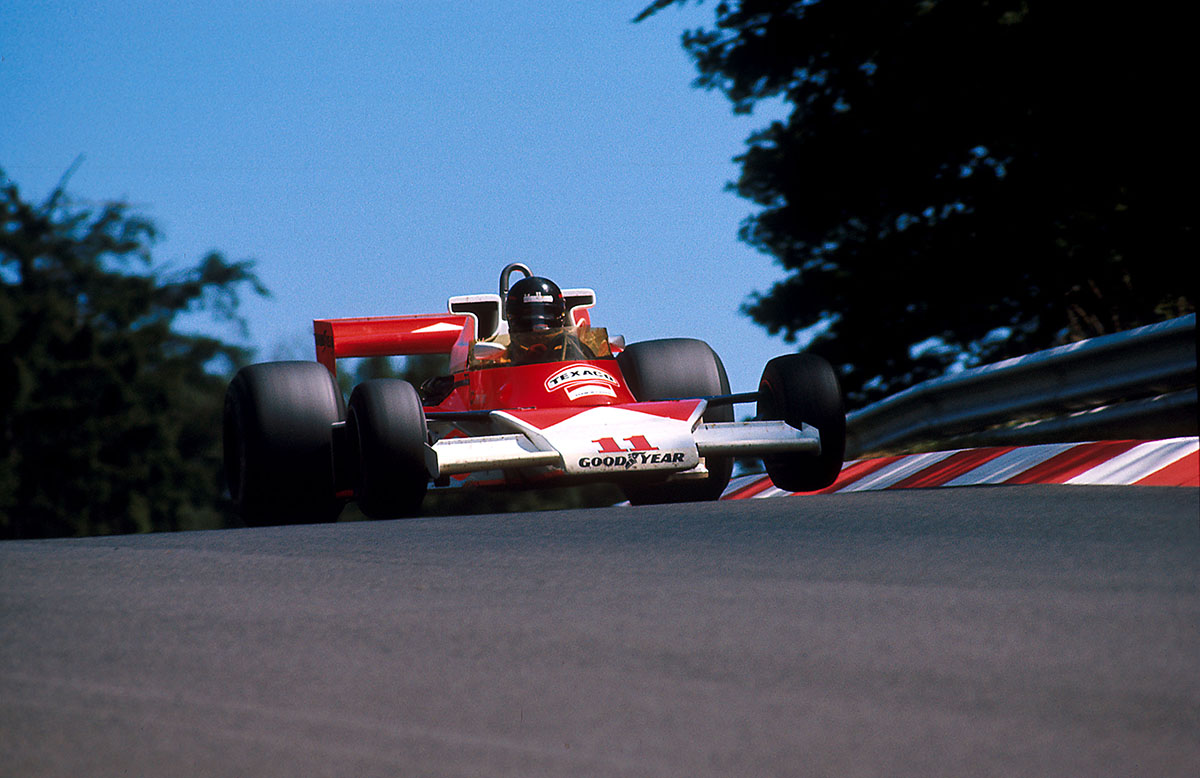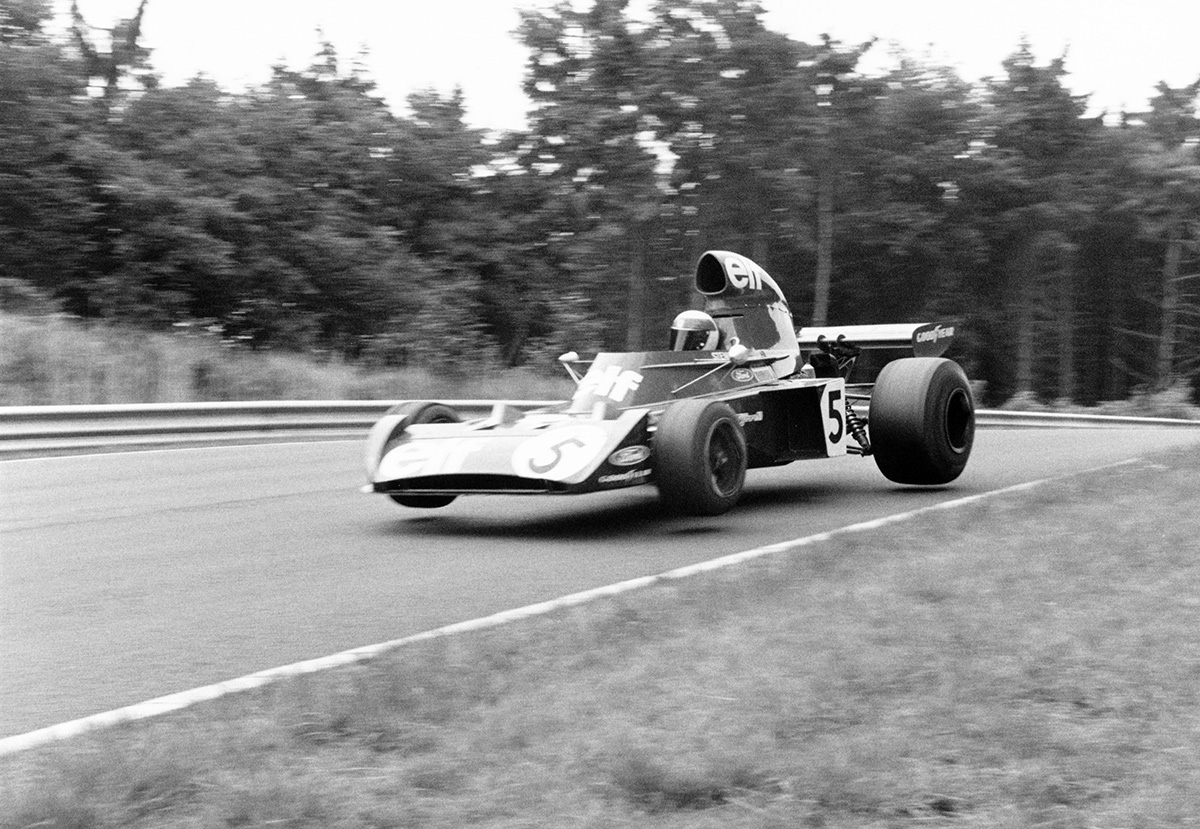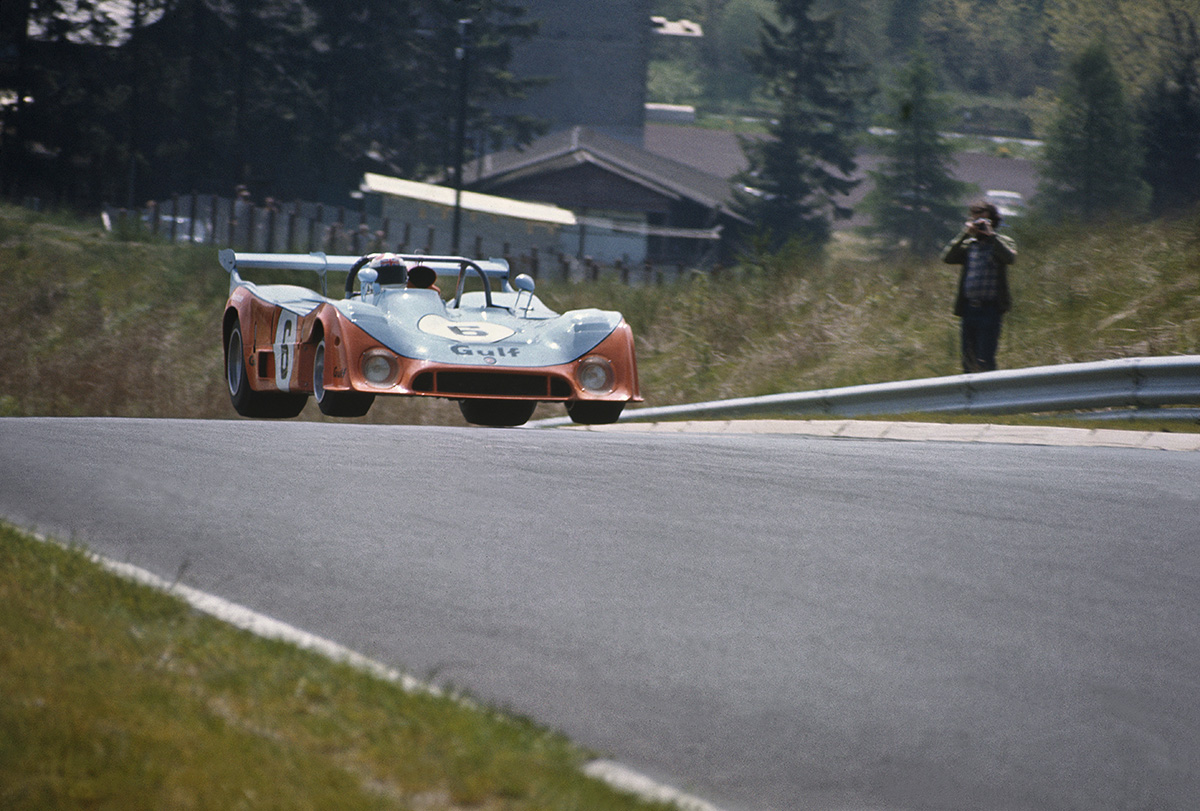Its bumpy nature no doubt played its part: Mario Andetti grounded his Lotus following a jump at Wippermann, causing a crash that resulted in Vic Elford’s car landing upside down in the woods and breaking his arm in three places. Even before the race, an accident in practice had claimed the life of Gerhard Mitter.
John Surtees cocks the inside rear wheel of his unwieldy Cooper T81-Maserati during the 1966 German Grand Prix. The Brit had battled with Jack Brabham throughout the course of the race, setting the fastest lap before eventually finishing second to the Aussie after his clutch failed with two laps to go. The soaking wet surface proved costly for Jim Clark, who spun off having qualified on pole position.
Jacky Ickx lit up practice for the 1967 German GP, setting the third-fastest time overall in his Formula Two Matra. Only Jim Clark and Denny Hulme - both in full-fat Formula One cars - were quicker. Ickx knew the ‘Ring well, as proven by this shot of him at Brunnchen, but he retired from fourth position when, perhaps not surprisingly, his car’s suspension failed.
Aside from the most well-known jumps at Flugplatz, Brunnchen and Pflanzgarten, the ‘Ring contained myriad other crests and brows that would see cars taking off multiple times per lap. One was out at the 13km marker, on the long, fast run from Bergwerk to the Karusell. The fact that it was sited on a left-hand kink is ably demonstrated here by Jackie Oliver, as he performs a single-point landing in his F2 Lotus during the 1967 German GP. He went on to finish fifth.
One of three Formula Two BMWs to take part in the 1969 German Grand Prix launches over Brunnchen, with the little bridge that gives this section its name just about visible at the bottom of the hill. This section has been flattened completely - in the commentary for his onboard Porsche 956 lap in 1983, Derek Bell noted that “it isn’t very exciting anymore” - but this proves how popular it once was with photographers.
The last hurrah for the Nurburgring came in 1976. After Niki Lauda’s fiery crash at Bergwerk, the circuit was deemed to no longer be safe enough for Formula One, and Lauda’s title rival James Hunt came through to win the last Grand Prix on the Nordschleife. Here, Hunt lifts an inside wheel as his McLaren prepares to sweep over the top of Pflanzgarten, a short sequence of yumps and quick corners in which Peter Collins suffered his fatal crash in 1958.
Jackie Stewart once said that the only time he really enjoyed the Nurburgring was in front of his fire at home, thinking back on it at the season’s end. He also said that he never did one more quick lap of the place than he really needed to. That didn’t stop the Scottish legend enjoying great success here, winning the German GP in 1968 and ’73. In the latter, he led home Tyrrell team-mate Francois Cevert.
A different view of Flugplatz, this time taken from the inside of the circuit as Derek Bell presses on during the 1974 Nurburgring 1000km. It was vital to clear this crest well to set up the car for the two quick right-handers that followed, then the fast run down to Schwedenkreuz.
Greg MacLeman
Greg MacLeman is a contributor to and former Features Editor of Classic & Sports Car, and drives a restored and uprated 1974 Triumph 2500TC
